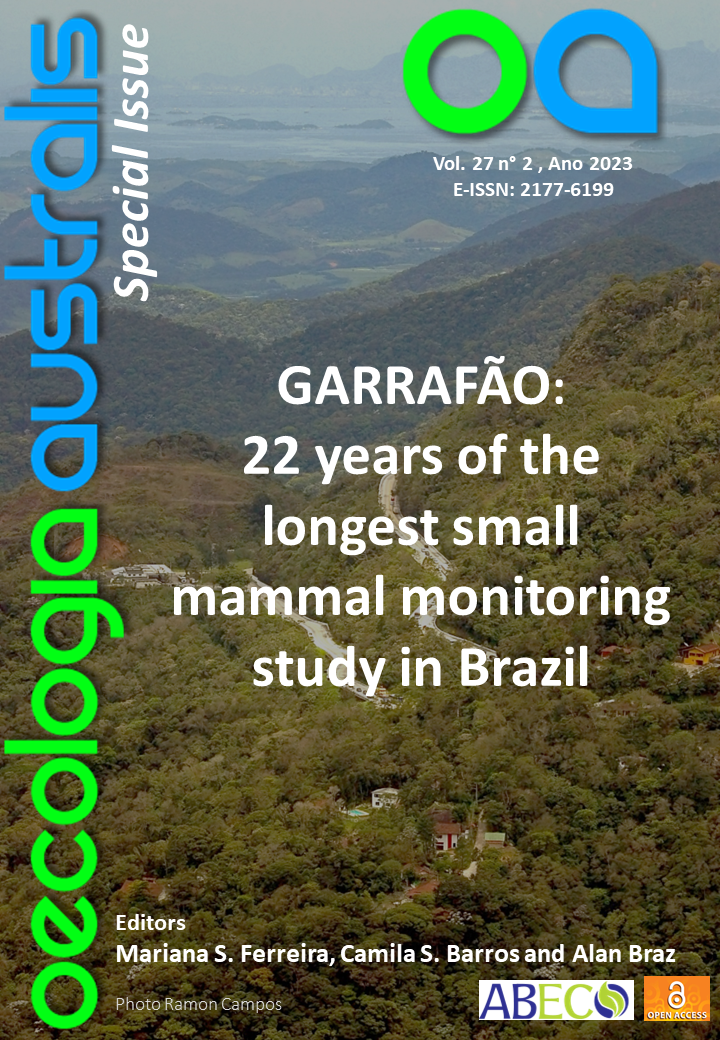ECOLOGY OF TROPICAL FOREST SMALL MAMMAL POPULATIONS: PATTERNS AND PROCESS REVEALED BY THE LARGEST MONITORING STUDY IN BRAZIL
DOI:
https://doi.org/10.4257/oeco.2023.2702.02Abstract
Long-term monitoring studies have spearheaded the development of population ecology as a discipline. Today, the vast amount of information obtained from these studies is concentrated at higher-latitude ecosystems. Here we present the advances achieved by the largest long-term population monitoring study of small mammals carried out in a tropical forest in Brazil. Started in 1997 and with a total duration of 22 years, the Garrafão projectwas developed in one of the biggest Atlantic Forest remnants, in the southern limit of the Serra dos Órgãos National Park. Most studies developed with this valuable dataset have focused on the most abundant species of marsupials and rodents. In general, this long-term study brought important advances in the understanding of the population ecology of mammals in tropical forests, such as: (1) the predominance of population self-regulation in one of the most species-rich environments; (2) the importance of survival for population growth and regulation; (3) seasonal and continuous reproduction in marsupial rodents, respectively; (4) the positive relationship between body size and space use in marsupials weighing up to 100g (opposite relationship in species weighing more than 100g); (5) differences in space use between sexes and age classes, and positive (and negative) effects of density; and (6) differences in habitat selection in species living in different forest strata. Several other questions remain to be answered with this dataset and this review aims to stimulate the creation of new long-term monitoring studies in different ecosystems in the tropical region.Additional Files
Published
2023-06-15


